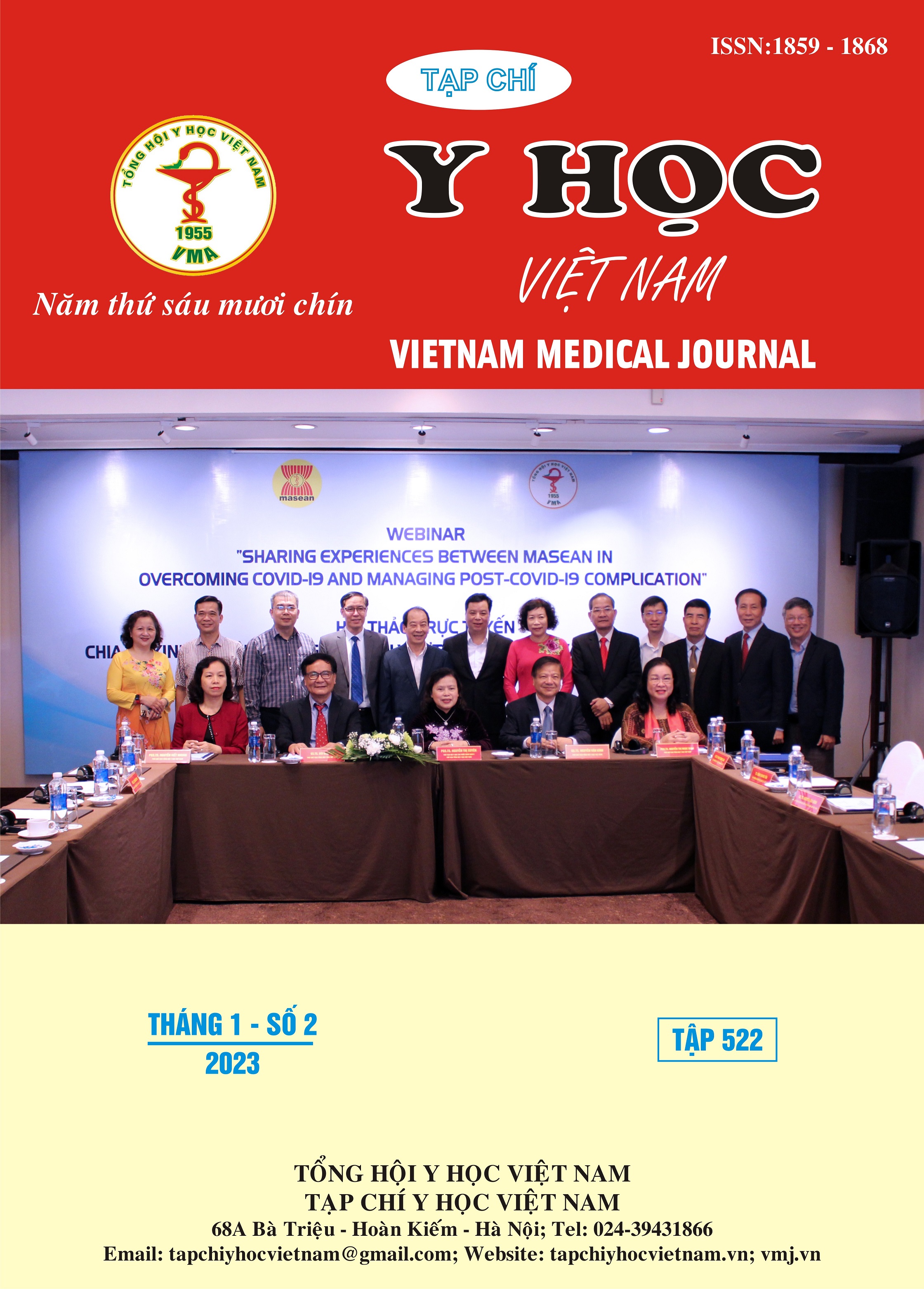SOME FACTORS RELATED TO THE RATE OF GROSS TOTAL RESECTION (GTR) OF THE ANTERIOR CRANIAL BASE TUMOR BY EYEBROW KEYHOLE APPROACH
Main Article Content
Abstract
Specify some factors related to the rate of gross total resection (GTR) of the anterior cranial base tumor by eyebrow keyhole approach. An interventional study, comparing groups based on 65 patients treated at Viet Duc Hospital from 1/2017 to 12/2020. Results: A total of 65 patients, including 49 women and 13 men, underwent surgery. The youngest age was 5 and the highest was 76. History of previous treatment in 8 patients (6 surgery and 2 radiosurgery). GTR was achieved at 73.8%; subtotal removal (STR) at 21.5%; partial removal at 0.3% and biopsy at 0.1%. GTR was achieved in all cases of Rathke cyst, subarachnoid cyst and dermoid cyst. The rate of GTR and STR in the meningioma group was 66.7% and 24.2% respectively. These rates in the group of pituitary tumors and craniopharyngiomas were 75% and 25%, 50% and 50% respectively. The rate of GTR and STR in the sellar meningioma was lower than in other locations (p<0.05). The rate of GTR in the group of untreated patients was higher than in the group who received radiation therapy or had surgery before, p<0.05. The GTR in the group of tumors £ 3cm (80.4%) was higher than tumors >3cm (50%), p<0.05. This rate in the favorable dissection group was 39/53 (84.9%), higher than the difficult dissection group 3/12 (25%), p<0.05. The GTR of dense tumors 30/44 (68.2%) was not different from the mixed tumors 4/6 (66.7%), but lower than cyst tumors 14/15 (93.3%), p<0.05. This rate was 29/45 (64.4%) in the tumors with vascular invasion, lower than non-invasive tumor group 19/20 (95%), p<0.01. The GTR in the calcified tumors was 2/6 (33.3%) was higher than in non-calcified tumors at 46/59 (77.9%), p<0.05. This rate in the group of cavernous sinus invasion tumors was 1/5 (20%) lower than tumors that did not invade the cavernous sinus 47/60 (78.3%), p<0.01. The GTR of the tumors that did not invade the third ventricle was 48/61 (80%) higher than the third ventricle invasion tumor 0/4 (0%), p<0.005. Conclusion: The GTR by eyebrow keyhole approach was higher in the group of untreated tumors, tumors smaller than 3cm, Rathke cysts, arachnoid cysts, dermoid cysts, non-vascular invasion, cystic, non-calcified tumors and tumors that did not invade the third ventricle.
Article Details
Keywords
Risk factor, anterior skull base tumor, eyebrow keyhole surgery
References
2. Barbero J M R et al (2022), Keyhole supraorbital eyebrow approach for the resection of a tuberculum selae meningioma with intraoperative endoscopic assistence, Surgical Neurology International, 13, 93, 1-3
3. Bhattarai R et al (2017), Microsurgical management of tuberculum sellae meningioma by the supraorbital keyhole eyebrow approach: surgical outcome, Nepal Journal of Neuroscience, 14, 26-32.
4. Zheng X et al (2022), keyhole supraorbital eyebrow approach for fully endoscopic resection of tuberculum sellae meningioma, Frontiers in Surgery, DOI: 10.3389/fsurg.2022.971063.
5. Nangarwal B et al (2022), Anterior skull base meningioma: surgical approach and complication avoidance, J Neurol Surg B Skull Base, DOI.10.1055/a-1733-9320.
6. Dhandapani S and Wankhede L S (2021), Orbital rim sparing single-piece fronto-orbital keyhole craniotomy through eyebrow incision: a technical report and comparative review, Neurology India, 69, 2, 441-445.
7. Reisch R et al (2015), The supraorbital keyhole approach: how i do it? Acta Neurochir, 157, 979-983.
8. Zador Z and Gnanalingham K (2013), Eyebrow craniotomy for anterior skull base lesions: how i do it, Acta Neurochir, 155, 99-106.


